Social Media Marketing for Restaurants – 15 Tips With Examples
It’s no mystery that social media is much more than a place to share moments of life, watch 9gag, or watch cute pets videos. Whether we like or not, it also became a part of the offline side of life. Social media is now also an important part of business – it’s another marketing channel for all sorts of businesses, both online and brick and mortar businesses.
Car workshops, online stores, architecture firms, personal trainers, music bands and funeral houses – for better or for worse – are already present in social media. It includes restaurants.
Much have been written and said about social media marketing for online businesses: SaaS (software-as-a-service) companies, online stores, or new technologies.
But what if you’ve just opened your donut shop around the corner and want to build a proper online reputation to have more customers and grow your business?
To help you out, I prepared a guide to restaurant social media marketing.
A Few Important Numbers
The impact of social media on both the online and the offline is massive.
- 93% of consumers admits that online reviews impact their decisions.
- 84% of consumers trust online reviews as much as personal recommendations.
- 68% of consumers are willing to pay up to 15% more for the same product or service if they are assured they will have a better experience.
- 75% of people purchased a product because they saw it on social media.
Social media and online reviews are the social proof restaurants need in order to develop and thrive.
A spot-on restaurant social media marketing is a must.
What You Need From Restaurant Social Media Marketing
Social media marketing for your restaurant is an investment that takes time, effort and money. If done properly, the return on the investment is huge.
Your goals here are simple:
Let the world know you exist. Prove your place is better than your competitor’s. Make them stop by.
Let’s do it
Tip 1. Create proper restaurant social media profiles.
Restaurant social media marketing starts with a basic task – creating proper profiles on Facebook, Instagram and Twitter.
I’m pretty sure that Facebook and Instagram will be your main channels, but have also a Twitter account. Just in case.
This is what proper means:

Proper on Facebook means all relevant information is there:
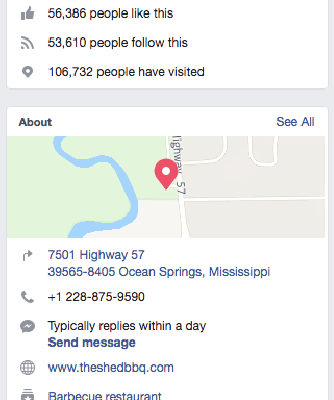
And here’s proper on Twitter:

To sum up, all above-mentioned profiles contain a short description, a link to their websites, and address.
A proper social media profile of a restaurant contains one more thing: a unique branding.
People judge the book by its cover so in order to attract attention of social media users, you need to have beautiful branding: logo, branded
images and a unique restaurant hashtag.
Tip 2. Use social media monitoring.
Restaurant social media marketing can hugely benefit from social media monitoring.
To put it simply, social media monitoring tools collect in real time all online mentions of predefined keywords.
This may include, for example, your restaurant name and your restaurant hashtag.
It’s a simple yet powerful tool to handle at least a couple areas of your online presence:
- Reputation monitoring.
- Influencer marketing.
- Finding customers.
- Customer service.
There’s much more to social media monitoring but this is perfectly enough for a restaurant entering the market.
If you feel like this is something you need, you can give it a try and play around for free.
Tip 3. Take and post beautiful photos.
Great photos are an inevitable part of restaurant social media marketing.
Great photos sell stuff.
Make sure that photos from your restaurant are no different.
Visual content is superior to any other form of content. It’s easier to absorb, stays in mind and, in the case of food, whets the appetite. Food is visual.
Canva (BTW a great and simple tool for graphic design) presents some interesting numbers of importance in restaurant social media marketing:
- Tweets accompanied by images receive 150% more retweets.
- Facebook posts accompanied by images receive 2.3 times more engagement.
You can use Canva to create brand social media images for your restaurant.
The food your restaurant serves is a commodity. You need to show it off!
Tip 4. Participate, engage and share.
Your restaurant is a part of a local community. Support local events, partake in initiatives and come up with some.
For example, there’s a bike race in your area. Get in touch with organizers and set up your stand and offer your coffee.
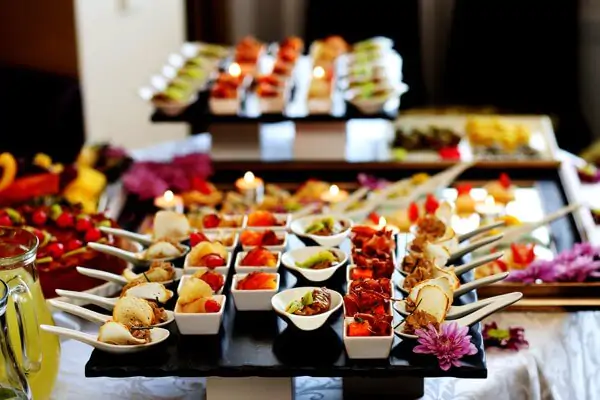
Another example. There’s the World Book Day. Announce in your social media that every person that comes to your restaurant and reads book will get a discount.
The last example. If you run a pizza place, create a Facebook event inviting people to the movie night you will organize and watch some movies about pizza.
Options are endless here.
Tip 5. Find your customers.
Find your customers on social media and invite them in.
People traveling to other cities often ask on social media for restaurant recommendations.
You, as a restaurant, with the help of social media monitoring, can identify these social media posts asking for recommendations. Then, you reach out to this person and present him or her with your offer.
All you need is a social media monitoring and a well-optimized project.
Yep, you have to fight for every single customer also on social media.
Tip 6. Host social media contests.
Capriotti’s Sandwich Shop does it well.

They organize caption contests for food coupons. The most talented and lucky author gets a coupon to spend the next time her or she visits their restaurant.
It builds closer relationships with customers and engages them. Also, all sorts of contests attract people because it’s a chance to save some money. A penny saved is a penny earned.
Tip 7. Use emojis.
I can’t believe I’m actually writing these words: emojis are a marketing tool.
In fact, you can now post an emoji to order a pizza on Domino’s Twitter. This simple solution won a Titanium Grand Prix at the Cannes Lions International Festival of Creativity! That’s a next level restaurant social media marketing!
Don’t forget about Taco Bell’s marketing campaign on the occasion of bringing to life a taco emoji.
A study from the University of Missouri-St. Louis proves that emojis have a positive socio-economic impact and influence human emotions.
Data from Zazzle media shows that social media posts with emojis have a 57% higher like rate, a 33% higher comment rate, and a 33% higher share rate.
I think we have social proof. Now back to restaurant social media marketing.
THERE IS SO MANY FOOD EMOJIS YOU CAN USE!
Use them in reasonable amounts in your social media posts.
Tip 8. Monitor your reputation.
Restaurant social media marketing involves monitoring social media mentions of your restaurant.
It’s particularly crucial for newly-opened restaurants to gain initial traction both online and offline.
Monitoring social media mentions about your restaurant increases, what social media reach they generate, you see the most influential sources that mention your restaurant name (an influential flood blogger? an online food magazine?).

The number of social mentions and their social media reach is represented on a chart so that you can quickly identify spikes in the volume of mentions and social media reach.

Track them and see who mentions your restaurant name. Who knows, maybe you made it to a blog post about new promising restaurants in your town!
Tip 9. Do Facebook ads.
Facebook ads are a blessing for restaurant social media marketing – they provide rich targeting (and RE-targeting) options.
The great thing is that Facebook offers geotargeting. It means you can advertise only to people in your area.
Also, you can specify age groups, or target people of certain interest, likes and followed pages.
Facebook ads are a whole topic in itself, but you should definitely go for it. And this video is a great guide if you want to learn more about it:
Tip 10. Show the behind-the-scenes.
Share moments and anecdotes from the backstage of your restaurant – it works great in building relationships with customers over social media.
Show your employees, introduce them and place into spotlight. Show the people that make the magic happen.
It humanizes your restaurant and fosters the relationship between you and your followers and customers. They will be more likely to recommend your place!
Tip 11. Gather customer feedback.
You can do it without bothering your customers. Here’s how.
Restaurant social media marketing can massively benefit from social media monitoring.
People in social media share their experiences. They might be talking about their visit in your restaurant: if they liked the menu, if this pasta was overdone, if they missed this one brand of beer.
Customer feedback is priceless for restaurants making their first steps.
Tracking social mentions of your restaurant lets you can gather customer feedback without bothering your customers – you just read what they posted about your restaurant.
It’s always good to respond, no matter if a review is positive or negative. Remember to respond!
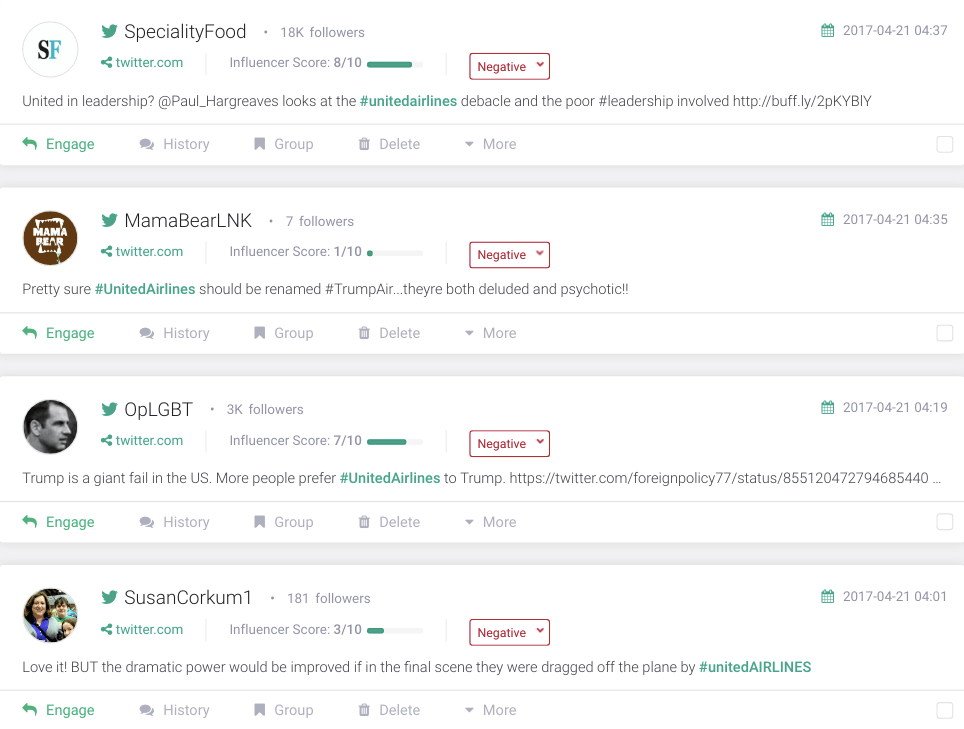
Can you believe that Paris Creperie responds to every single online review?! How cool is that!
Here’s a great example of restaurant social media marketing: a restaurant was monitoring relevant phrase and learned about the problems mothers with babies face – they miss changing tables in restaurants. See how it ended!
Tip 12. Use Instagram hashtags.
Hashtag do not only look cool but they are your way to show your restaurant to the world.
Contrary to other social media platforms, Instagram hashtags work really, really well. If used knowingly, they are a great help in getting exposure for your restaurant on social media.
Focus on using trending hashtags on Instagram. Then your Instagram post will be featured among the most popular posts at a given time. The chances of getting noticed increase. Don’t forget to use your town name as a hashtag! Launch Instagram hashtag campaigns. Contests, coupons, lotteries, giveaways, events at your restaurant. They all can become hashtag campaigns: easy to spread, boost brand awareness, and easy to measure.
This video shares some good tips on how to find the best Instagram hashtags to grow your Instagram account:
The performance of your hashtags can be tracked using social media monitoring. Here’s you can find more information about Instagram hashtag analytics.
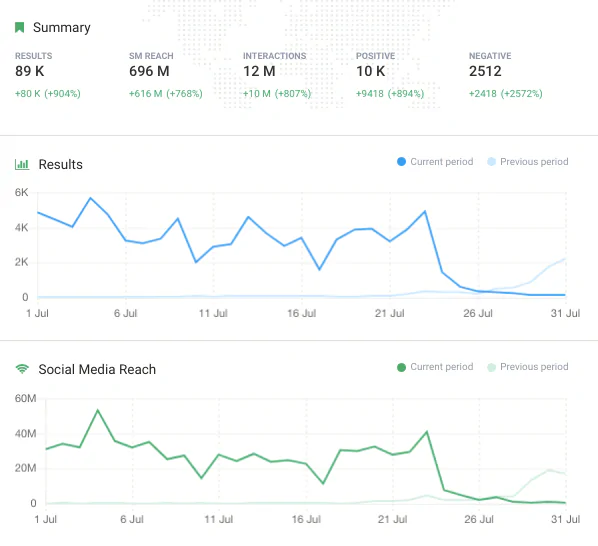
To keep up with trending hashtags, you can use RiteTag. Here’s more about monitor hashtag performance.
Tip 13. Do influencer marketing.
Influencer marketing is another important part of restaurant social media marketing.
It’s basically cooperating with people of considerable social media influence who have an audience and authority in a given field.
As a restaurant in social media, I would aim at cooperations with lifestyle and food bloggers. They starve for new food in town and good content for their blog, vlog or podcast.
First of all, you need to identify them. Again, social media monitoring can be of help here. It’s pretty simple – monitor keywords related to your business area, i.e. restaurant, review, food, blog. This way, a social media monitoring tool will show you authors and sources (blogs, blog posts) that mention keywords relevant to what you do.
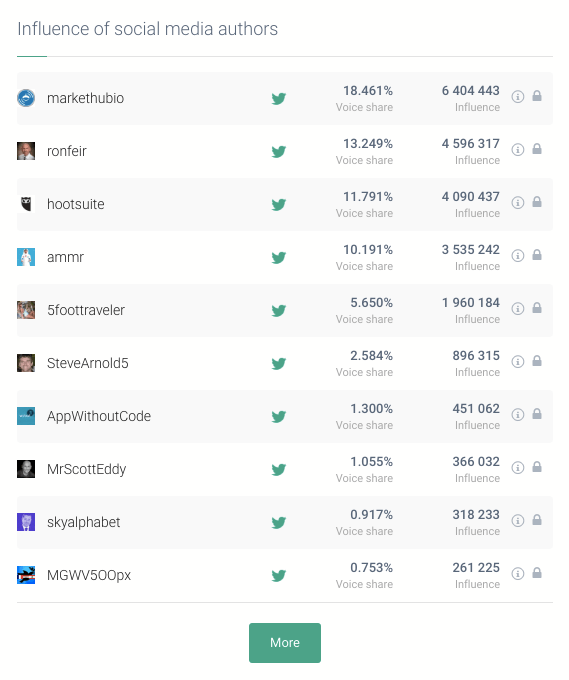
Among them, you identify lifestyle and food bloggers. Then, you need to reach out to them and invite them to your restaurant for a review.
It’s a win-win situation – they get fresh content and your restaurant gets social media exposure.
Tip 14. Share customer-generated content.
It’s a social (media) proof a good opportunity to turn your customers into ambassadors. A little bit like already mentioned influencer marketing.
The difference is that your customers don’t offer social media exposure but they offer endorsement.
Again, here you can create a hashtag campaign on Instagram, Facebook or Twitter.
Here’s a great example of restaurant social media marketing from Pieology Pizzeria. Their customers can be featured in the restaurant’s social media using #MyPieology hashtag.
Just like here:
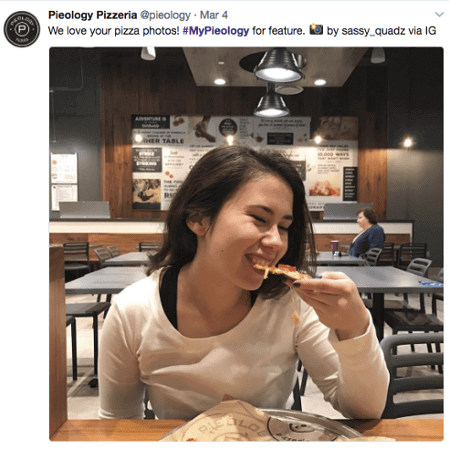
Tip 15. Use promoted tweets.
Again, you should promote your restaurant with paid ads also on Twitter.
Similarly to Facebook, you can precisely target consumers using geo targeting. It’s an awesome opportunity to promote meals around meal times.
Restaurant industry during COVID-19
Even in the restaurant biz, social media content needs to be relevant, and recent events (like COVID-19) have proven that a lot can change in a very short amount of time. That’s why social media and SEO are not unrelated topics, especially if you want to create relevant content that your customers will appreciate.
This infographic compares search trends for the terms “best restaurants near me” and “food delivery” between 2019 and 2020.
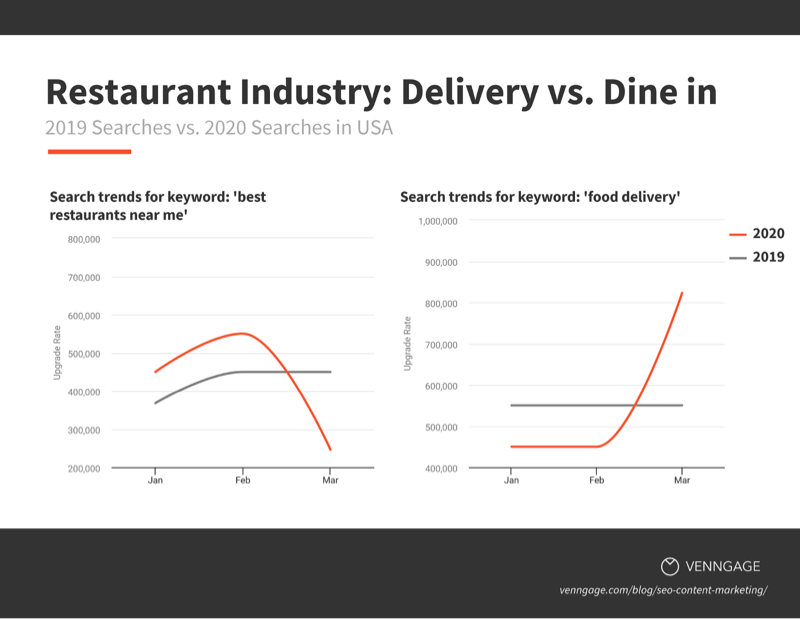
Although queries about the best restaurants have decreased (due to people having to stay at home), the number of people searching for “food delivery” have gone up. Looking at search trends like this can help restaurants find opportunities to pivot and then leverage social media to communicate relevant changes, so that they can help keep their businesses going, even during very harsh business conditions created by COVID-19.
Conclusion
Do you have any other tips for restaurant social media marketing? Feel free to put them in the comment section down below!
FAQ
How much does social media marketing cost for restaurant?
The cost of social media marketing for a restaurant can vary significantly, primarily based on the depth and breadth of the restaurant’s social media strategy. A comprehensive plan could encompass a wide array of social media sites, including Facebook, Instagram, Twitter, Pinterest, LinkedIn, and others. The financial investment in your social media presence will depend on several factors.
If a restaurant decides to manage its social media presence internally, the costs would mainly consist of the time spent by employees creating content, responding to customers, and analyzing performance. This can range from a few hours a week to full-time work, depending on the size of the restaurant and the extent of its social media strategy. Given that the median salary for a social media manager in the United States is around $50,000 per year as of 2021, the costs could quickly add up if a full-time position is required.
For restaurants opting to outsource their social media management to an agency, the costs can also vary greatly. A smaller, local agency might charge between $1,000 to $2,500 per month, while a larger, more established agency could charge between $4,000 to $7,000 per month or even more, again depending on the extent of services required.
How often should restaurants post on social media?
How often a restaurant should post on social media is dependent on several factors, including the platform being used, the restaurant’s goals, the available content, and audience engagement levels. However, a general rule of thumb is to maintain a consistent presence without overwhelming your audience. It can range from between 3-10 posts per week.
On Facebook, for example, a restaurant’s Facebook page should ideally be posting at least 3 times a week. This frequency keeps your brand in the audience’s mind while not flooding their feed with your content. On the other hand, platforms like Twitter and Instagram can handle a higher posting frequency, given their fast-paced nature. You might aim to post at least once per day on these platforms.
What social media is best for food marketing?
Different social media channels have different strengths, and the best platform for food marketing often depends on your restaurant’s specific goals, audience, and content style.
Instagram is frequently considered the top social media platform for restaurants and food marketing. Its focus on visual content makes it a perfect place to showcase high-quality photos and videos of your food, interior, and happy customers. It also has features like Stories and Reels, which can be great for sharing behind-the-scenes content or short, engaging videos. The platform also makes it easy to share user-generated content, which can boost your restaurant’s social media profiles with authentic and engaging content.
What is 4p marketing strategy for restaurant?
The 4P marketing strategy, also known as the marketing mix, is a classic business framework that consists of Product, Price, Place, and Promotion. Here’s how it can be applied to a restaurant business:
- Product: This refers to what you’re selling. In restaurant marketing strategy, it’s not just about the dishes you serve, but the entire dining experience. This includes the menu, food quality, ambiance, customer service, and any unique selling points your restaurant has. Understanding your customers’ needs and expectations will help you tailor your product to them. For instance, you could offer vegan or gluten-free options if those are in demand in your area.
- Price: This involves determining how much you’ll charge for your dishes and services. Pricing should be competitive yet profitable, reflecting the quality and cost of your offerings. Consider your target audience’s budget, your costs, and your competition when setting prices. Remember, pricing can greatly influence your customers’ perception of your restaurant.
- Place: This is about where customers can find and access your product. In a restaurant’s case, it’s the physical location, its accessibility, the decor, and ambiance. But in today’s digital age, ‘Place’ also refers to where you’re present online. This could include your own website or different social media platforms where your customers can learn about you, interact with you, and even place orders.
- Promotion: This encompasses all the ways you communicate with potential customers to make them aware of your restaurant, convince them to visit, and ideally become loyal customers. Promotions can be carried out through traditional advertising methods such as print, radio, and television ads, but also through digital marketing techniques. Your restaurant’s marketing strategy should leverage social media tools, email marketing, SEO, content marketing, influencer collaborations, and even user-generated content.
Remember, all these elements are interconnected. For example, a change in your menu items (Product) might call for a change in your pricing strategy (Price), which could then impact your promotional efforts (Promotion). It’s all about finding the right balance that aligns with your restaurant’s overall business goals.

![Successful Instagram Marketing Strategy – Complete Guide [2024]](https://brand24.com/blog/wp-content/uploads/2023/01/Instagram-Marketing-Strategy.png)

